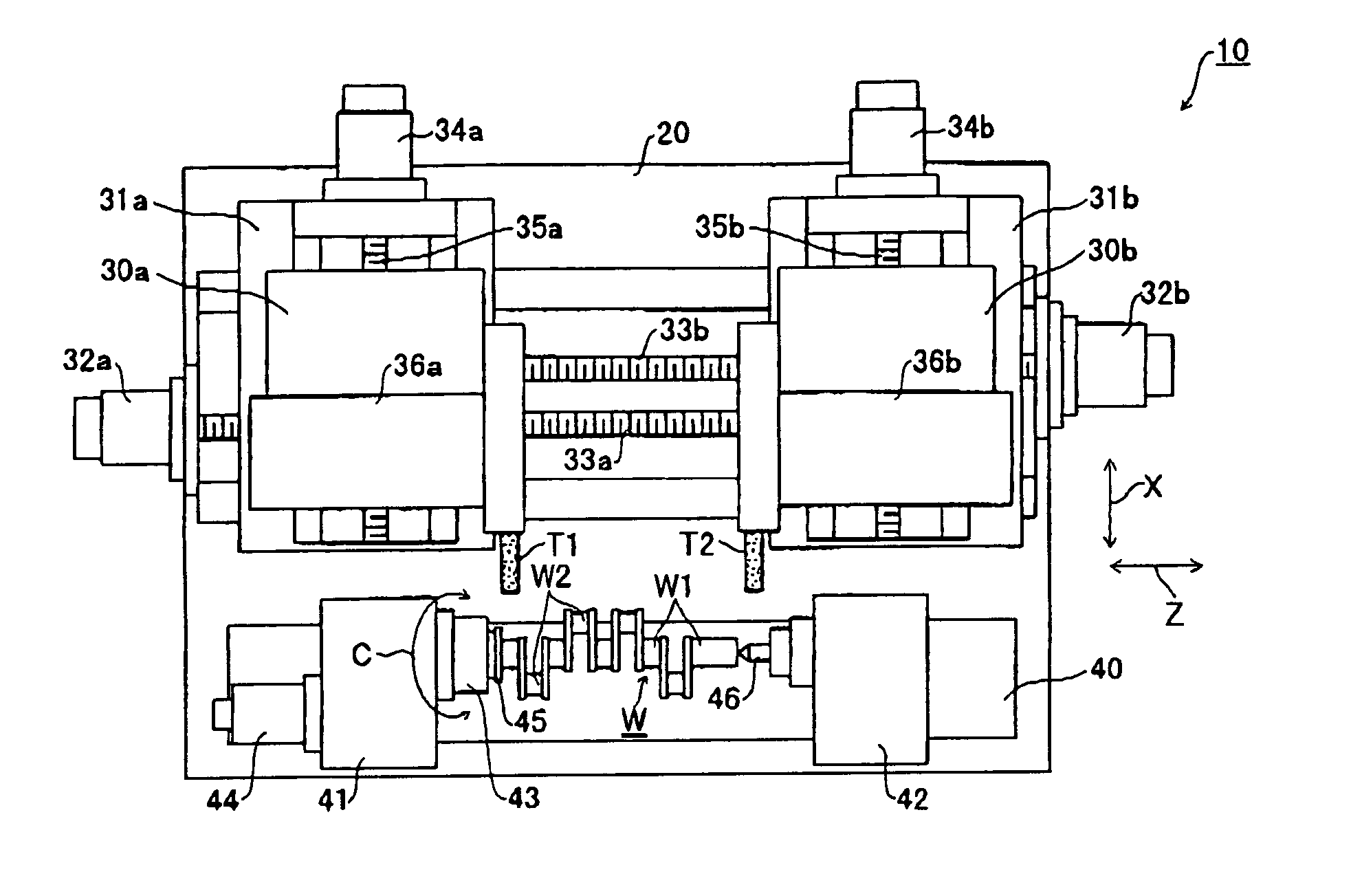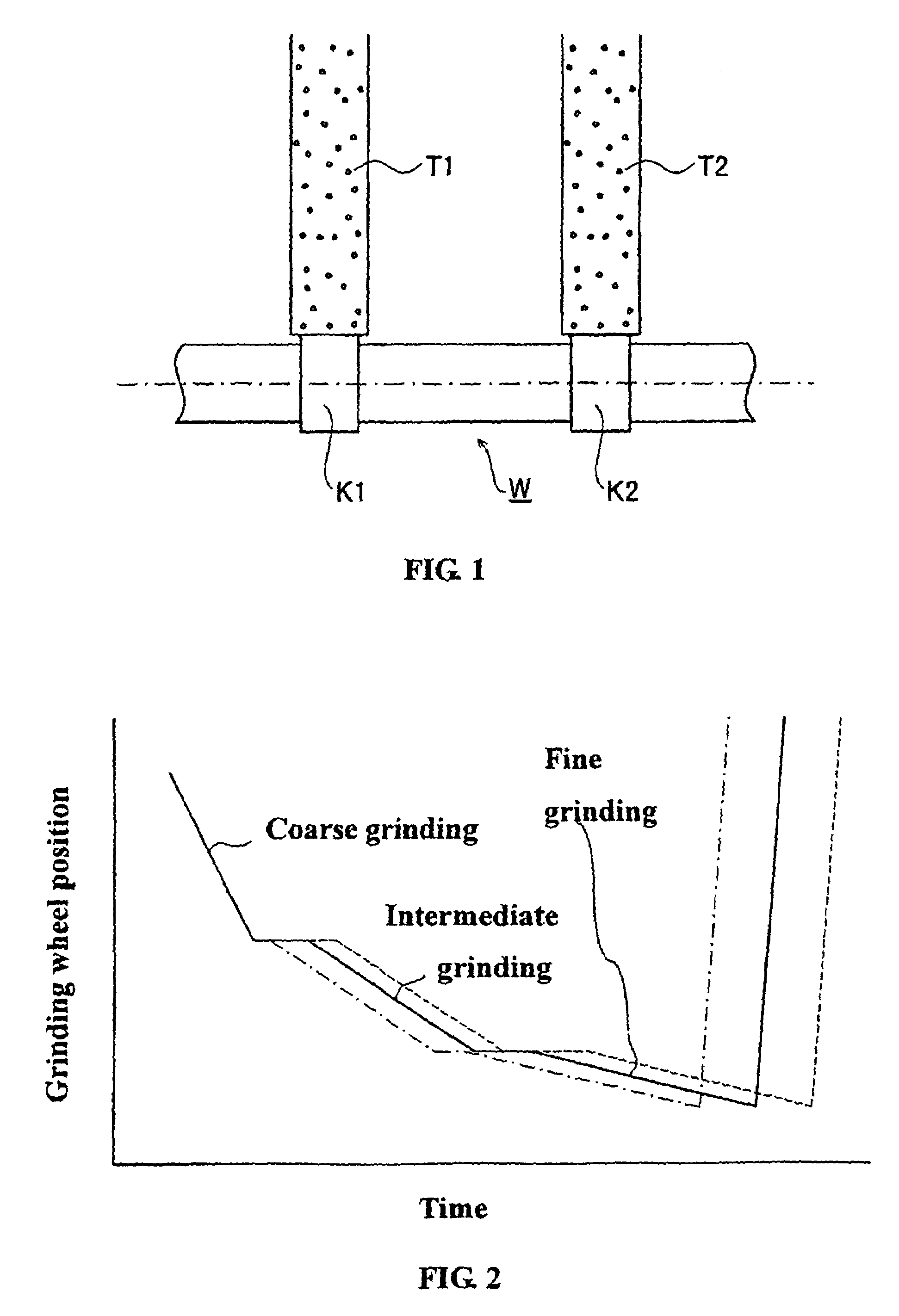Method of grinding
a grinding method and grinding technology, applied in the field of grinding methods, can solve the problems of unstable deflection of the bended workpiece at each end of the final grinding process, and achieve the effects of preventing the occurrence of easy dispersion of grinding accuracy
- Summary
- Abstract
- Description
- Claims
- Application Information
AI Technical Summary
Benefits of technology
Problems solved by technology
Method used
Image
Examples
second embodiment
[0040]the present invention will be described referring to FIG. 5 hereinafter. In this embodiment, a grinding by the grinding wheel T1 and a grinding by the other grinding wheel T2 are individually performed by an in-process controller without synchronousness each other. The individual grinding by each grinding wheel T1, T2 is controlled to be transmitted to next grinding process at the end of the coarse grinding, the intermediate grinding and the fine grinding. Referring to FIG. 5, a removable amount of grinding portion by the grinding wheel T1 is set less than a removable amount of grinding portion by the other grinding wheel T2 in the coarse grinding. In the intermediate grinding or the fine grinding in which the velocity of the grinding feed are less than the velocity of the grinding feed in the coarse grinding and a grinding time is longer a grinding time in the coarse grinding, a removable amount of grinding portion by the other grinding wheel T2 in the intermediate grinding o...
third embodiment
[0041]the present invention will be described referring to FIG. 6. A grinding by the grinding wheel T1 and a grinding by the other grinding wheel T2 are controlled individually by an in-process controller without the synchronousness. A removable amount of the grinding portion by said one grinding wheel is set also same to a removable amount by the other grinding wheel T2 in each of the coarse, the intermediate and the fine grinding, a grinding time by the other grinding wheel T2 delays from a grinding time by one grinding wheel T1 so that the grinding by the grinding wheel T1 is terminated prior to the termination by the grinding wheel T2.
fourth embodiment
[0042]the present invention will be described referring to FIG. 7. FIG. 7 shows only an end portion of grinding process and the other portion is the same to previous embodiments. After a termination of a fine grinding by the grinding wheel T1 (see a point a in FIG. 7), the grinding wheel T1 remains to contact with the workpiece without retraction immediately and both wheels are retracted at the same time when a fine grinding by the other grinding wheel T2 is terminated (see a point b). A velocity of the retraction of grinding wheels T1 and T2 are slow speed like a grinding feed speed, after passing a point c the velocity are changed to a normal rapid retraction speed.
PUM
| Property | Measurement | Unit |
|---|---|---|
| speed | aaaaa | aaaaa |
| velocity | aaaaa | aaaaa |
| feed velocity | aaaaa | aaaaa |
Abstract
Description
Claims
Application Information
 Login to View More
Login to View More - R&D
- Intellectual Property
- Life Sciences
- Materials
- Tech Scout
- Unparalleled Data Quality
- Higher Quality Content
- 60% Fewer Hallucinations
Browse by: Latest US Patents, China's latest patents, Technical Efficacy Thesaurus, Application Domain, Technology Topic, Popular Technical Reports.
© 2025 PatSnap. All rights reserved.Legal|Privacy policy|Modern Slavery Act Transparency Statement|Sitemap|About US| Contact US: help@patsnap.com



